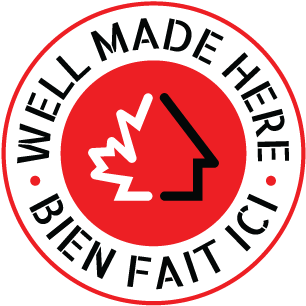GOVERNMENT OF CANADA SUPPORT FOR “WELL MADE HERE”: OUR MARATHON BEGINS
There is a unique window of opportunity due to the electoral calendar and we intend to use it to our advantage.

I am referring to the fact that the heads of the banners and all the manufacturers endorsing the “Well Made Here” program will have a role to play in encouraging the outgoing government to make a financial commitment prior to the campaign. Otherwise, if our appeal goes unanswered, we will take measures for the issues that are dear to us be taken up by all the contending parties, once the campaign is officially launched.
To deal with the ambient protectionism and the ultimatum of global warming, the foundations of the “Well Made Here” program, such as the protection and development of small manufacturing businesses, local buying initiatives and support for projects that contribute to the reduction of greenhouse gas emissions happen to be popular with citizens. And among politicians, who increasingly see these constituents as voters as the weeks pass…
If it’s true that all parties will compete through creativity and dollars to gain votes during the campaign, no doubt during the months of September and October, it is just as true that the outgoing Liberal government must show solidarity for the causes that are dear to the public.
We are therefore initiating, first, a government relations operation with elected Liberals and senior public service officials, in particular, those whose focus draws near to two ministers: The Honorable Mary Ng, Minister of Small Business and Export Promotion and the Honorable Navdeep Bains, Minister of Innovation, Science and Economic Development.
Together, they have pledged to dutifully support Canadian businesses and more specifically, in the mandate letter entrusted to them by the Prime Minister, to develop efficient measures to fight climate change.
Bear in mind that the Liberal Party of Canada’s platform particularly stipulates the two following commitments:
- We will improve energy efficiency standards for consumer and commercial products, and use new financing instruments to encourage investments in energy-saving retrofits to Canada’s industrial, commercial and residential buildings.
- To get our economy growing again, we need to immediately invest in helping our businesses and entrepreneurs – including those in manufacturing – become more innovative, competitive and successful.
Yet, whomever encourages local buying and in particular, the purchase of materials that meet public standards in effect in terms of energy efficiency and sustainability, favours the reduction of greenhouse gas emissions. In theory, we should be heard.
Add to these ministerial economic portfolio commitments the tabling of the recent Advisory Council on Climate Action’s report. Among the findings pertaining to built environments, we point out this one: Choosing (…) or constructing a highly efficient building no longer involves trade-offs between environmental, financial, and health benefits; all of these advantages are aligned. The task that remains is for government to set the right conditions for private sector ingenuity to move the broader economy towards these desirable outcomes.
The commissioners recommend that the Government of Canada ensure that the tools to support standardized building labelling are available for adoption by provinces and territories, and that these tools are maintained on an ongoing basis.
In terms of standardization and aggregation, the two commissioners recommend that the Government of Canada play a role in creating and disseminating tools that standardize best practices for building retrofits, and in aggregating smaller projects for investment at scale.
In just a few weeks, we have forged a network that promotes local buying and is comprised of 88 businesses with manufacturing plants in seven different provinces.
I invite you to browse through the http://www.ici-here.ca portal to gain awareness of this budding initiative; you’ll note that in just a few weeks, over 450 product line description sheets, amounting to several thousand individual SKUs have already been published by the manufacturers.
In this same period, we have secured support for the “Well Made Here” program through a network of more than 2 400 stores in Canada, subsidiaries or corporately owned by 10 major banners: ACE, BMR, Castle, Home Hardware, Lowe’s Canada, Patrick Morin, Réno-Dépôt, RONA, TimberMart and Unimat. And to this prestigious list, three more have stepped forward to express their intent to sponsor the program as well; the decision to accept or reject their candidacy rests with the board of directors.
Short-term measures still to come
During the most recent board meeting, held on June 20th in Toronto, I tabled a proposed letter addressed to the Right Honourable Justin Trudeau which the CEOs of each of the banners will be invited to co-sign.
In tandem, prior to the end of parliamentary sessions in Ottawa, I will have had preliminary meetings with certain elected and senior public service officials, as a matter of ‘taking the pulse’ as they say.
For their part, manufacturers will be invited to generate awareness of the pertinence of this collective movement by individually reaching out to their respective Members of Parliament. On the menu in the proposed form letter, the following position statement: the threat to manufacturing jobs and the opportunity to encourage residential owners to favour materials that meet construction standards and often, contribute to fighting pollution and obsolescence.
In short, together, we are proposing the following to residential consumers: hardware items and building materials that meet public construction standards, the requirements outlined for “Made in Canada” and are sold through a vast network of specialized stores spanning the country. In this, we possess remarkable political strength, which I intend to leverage.

I was in Ottawa on May 26th for the biggest gathering of runners in Canada. I sense that I will be returning often in the weeks to come, but as a lobbyist instead and, to undertake a wholly different type of marathon!
